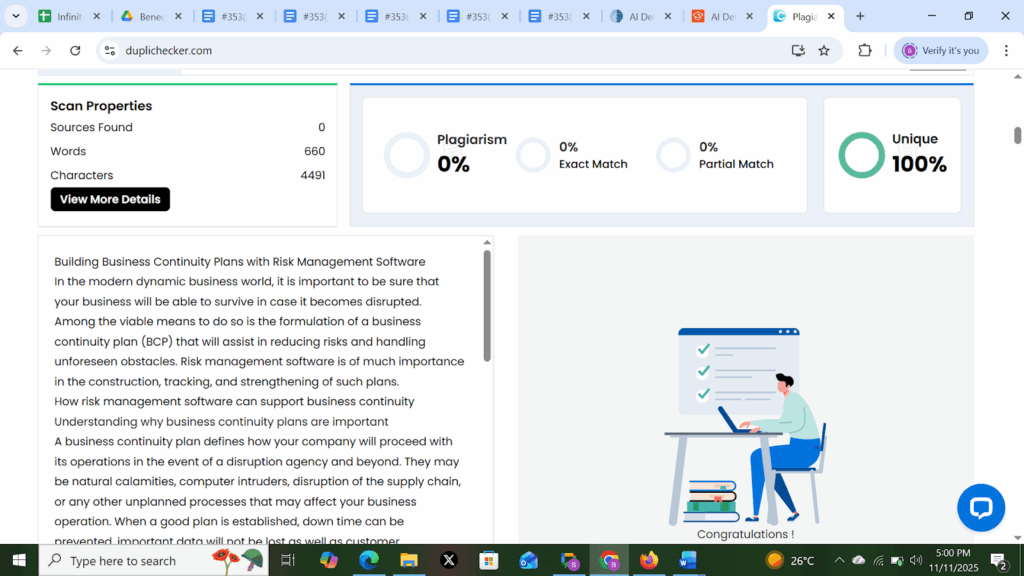Building Business Continuity Plans with Risk Management Software

In the modern dynamic business world, it is important to be sure that your business will be able to survive in case it becomes disrupted. Among the viable means to do so is the formulation of a business continuity plan (BCP) that will assist in reducing risks and handling unforeseen obstacles. Risk management software is of much importance in the construction, tracking, and strengthening of such plans.
How risk management software can support business continuity
Understanding why business continuity plans are important
A business continuity plan defines how your company will proceed with its operations in the event of a disruption agency and beyond. They may be natural calamities, computer intruders, disruption of the supply chain, or any other unplanned processes that may affect your business operation. When a good plan is established, down time can be prevented, important data will not be lost as well as customer confidence will not be lost.
- Reduces downtime: Due to the continuity plan, a business will not go down even in cases when it is severely affected.
- Protects assets and reputation: Lessens the financial and reputation consequences of a disruption.
- Supports decision making: Assists your business in acting swiftly in response to a crisis by means of predetermined measures.
How risk management software supports business continuity planning
The software to manage the risk e.g. the ones provided by Skefto helps businesses to detect, evaluate and eliminate any risks that can threaten the business operations. Through risk management software, the companies can automate the business continuity plan development process and make the business continuity plans efficient and practical. Here’s how it works:
- Centralized risk tracking: Assists in monitoring possible risks in real-time within the organization.
- Real time reporting: Presentation of data on risks enabling the management to make effective decisions within a short time.
- Risk assessment tools: This part determines running of the highest-impact risks and prioritizes them.
Key benefits of using risk management software for business continuity
When integrated risk management software is utilized in drawing a business continuity plan, it has the following major advantages:
- Proactive risk identification: Risk identification reflects attempts to identify possible risks at an earlier stage before causing any serious damage.
- Enhanced preparedness: business is better equipped to respond to unexpected occurrences with constant periodic checkups.
- Streamlined communication: Provides ease of communication among departments as to the mitigation strategies of risks.
- Better decision making: Real time data and analytics enables fast and sound informed decisions in times of emergencies.
Features of risk management software that support continuity planning
The following are some of the features that make risk management software a tool that is invaluable during the development of a business continuity plan:
- Automated risk assessment: Software may assess the potential risk and likelihood of potential risk, which saves time and resources.
- Customizable risk registers: Customizable risk registers enable business enterprises to enlist and manage certain risks in the running of their operations.
- Incident management: Helps in the management of incidents, including detection and solving of the incident to ensure swift response.
- Compliance tracking: Assists companies in ensuring that they act honestly and are in line with the industry regulations and practices.
Key considerations when using risk management software for continuity
Some of the considerations to bear in mind when selecting risk management software to include in your plan of business continuity include:
- User friendly interface: The software must also be user friendly to your team members.
- Scalability: Have the software scaled as needed by the expansion of your business.
- Integration with existing systems: The software must easily integrate with your existing business management systems.
- Security features: The software should have good security that secures sensitive business information.
Finally
A business continuity plan is the most important in safeguarding your business in case of unexpected hitches. Implement risk management software in the continuity planning of your business today and jumpstart your process of securing the future of your business.









